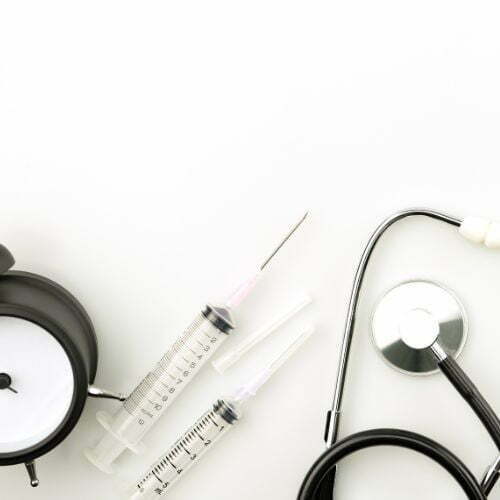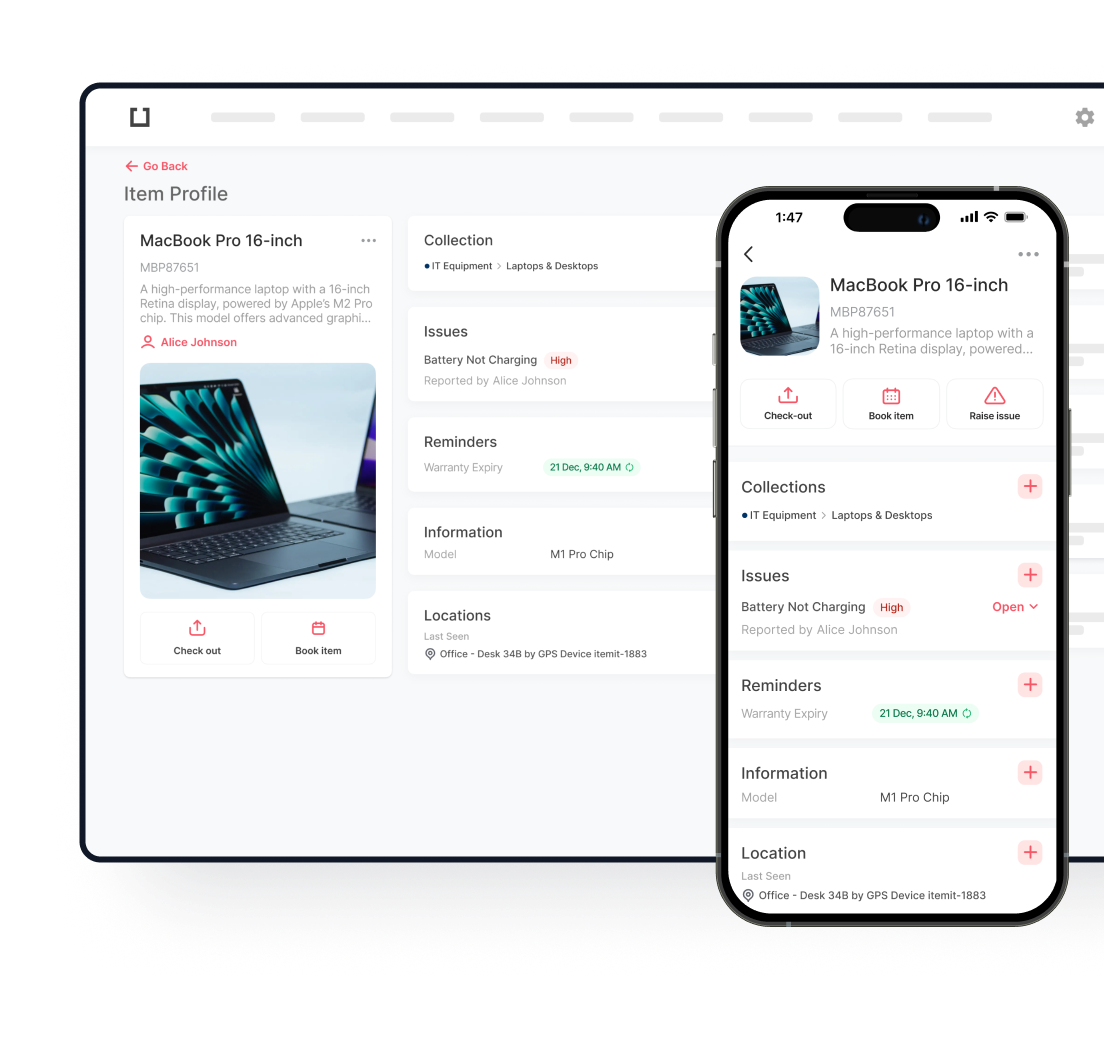
RFID solution is similar to using barcodes or QR codes to monitor the movement of assets but with RFID asset tracking software in healthcare, you can unlock greater levels of automation, transparency, and control. RFID asset tracking enables you to audit, manage and track assets with minimal risks and enhanced operations. No matter the size or type of industry your business belongs to, the benefits of using RFID to track assets remain the same: reduce costs, increase asset visibility, and maximise workplace efficiency.
Why You Should Use RFID to Track Healthcare Equipment
Discrete Tags
Digitise the Assets’ History
Easy Auditing
Control Costs
Protect Against Loss and Theft
Diving Deeper into the Advantages of RFID in Healthcare
1. Surgical Instrument Tracking: Preventing Errors and Ensuring Compliance
One operation uses hundreds of tools and devices in crowded operating rooms. Compliance with laws and patient safety depends on every item being counted for and sterilised following surgery.
Here’s how healthcare RFID solutions help:
- Every surgical tool has an RFID chip loaded with its own ID, usage record, and sterilisation status.
- Before and after operations, RFID readers scan tools to automatically update records, guaranteeing no tools are left inside the patient or missing.
- With audit reports created in a matter of seconds, hospitals can more easily meet legal obligations.
Key Benefit:
- Improved patient safety by reducing the risk of retained surgical items.
- Time saved in audits and compliance checks.
2. Patient Management: Improving Efficiency and Reducing Wait Times
How It Works:
- Arriving patients receive RFID-enabled wristbands.
- RFID readers automatically log their location as they pass across several departments.
- On a dashboard, staff members can track patient development to guarantee that patients are seen in the correct sequence and that none gets lost in the system.
Key Benefit:
- Reduced wait times and improved patient satisfaction.
- Better resource allocation, ensuring that staff and equipment are always in the right place.
3. Medication Distribution
How RFID Helps:
- RFID tags on medicines mark important information: drug name, dosage, expiration date, and patient prescription data.
- At drug dispensing machines, RFID readers confirm that the accurate medication is given to the proper patient at the right moment.
- The system records every transaction automatically to guarantee a compliance audit trail.
Key Benefit:
- Reduced medication errors, improving patient safety.
- Inventory control, ensuring that medications are always available when needed.
4. Access Control and Security: Protecting Sensitive Areas and Data
How It Works:
- Staff are issued RFID access cards that grant them entry to specific areas based on their role.
- RFID locks automatically log each access event, creating a detailed record of who entered and when.
- In case of unauthorised access attempts, the system can trigger alerts to security staff.
Key Benefit:
- Improved security, protecting sensitive patient data and high-value assets.
- Detailed access logs for audit and compliance purposes.
5. Inventory and Supply Chain Management
How It Works:
- Attached to medical supplies, RFID tags track their whereabouts and use.
- RFID readers automatically update inventory records as supplies are used, so lowering the demand for hand stock checks.
- When supplies near their expiration date or when stock levels are low, the system can set off alarms.
Key Benefit:
- Automated inventory updates, reducing manual labour.
- Cost savings by avoiding overstocking and eliminating expired items.
6. Emergency Response and Mass Casualty Events
How It Works:
- RFID wristbands tracking patients’ location and treatment status are provided to those in mass casualty events.
- Real-time patient flow monitoring in hospitals helps to guarantee that critical cases get priority.
- Tracking the availability of emergency equipment, RFID readers guarantee that it is constantly ready for use.
Key Benefit:
- Faster triage and treatment, improving survival rates.
- Real-time data to coordinate resources more effectively.
The Role of RFID in Compliance and Patient Data Security
RFID in healthcare is emerging as a powerful tool to automate compliance processes and secure patient data, making it easier for hospitals to meet regulatory requirements while improving operational efficiency. Here’s how RFID medical equipment management providers stay audit-ready, secure patient information, and ensure accountability.
1. Creating Automated Audit Trails for Compliance
RFID in healthcare automates this process by tracking interactions in real-time and creating tamper-proof logs for audit purposes. RFID tags on medical devices, patient records, and medications ensure that hospitals can generate compliance reports with just a few clicks, reducing administrative burdens and human errors.
For example:
- A hospital using RFID tags on infusion pumps can track every interaction, from who last used the device to when it was last maintained.
- RFID readers at data storage areas automatically log who accessed sensitive patient records and when, ensuring that only authorized personnel have access.
- In pharmacies, RFID tags on medications track dispensing activities, ensuring patients receive the correct prescriptions and dosages.
With RFID in healthcare, hospitals no longer need to manually compile data for audits, saving time and money while ensuring complete compliance with regulations.
Key Benefit:
- Reduces the risk of human error in compliance reporting.
- Automates audit trails, making hospitals audit-ready at all times.
- Improves accuracy and accountability, reducing exposure to fines.
2. Strengthening Access Control to Protect Patient Data
Traditional access control systems, like manual sign-in sheets or password-protected databases, can be vulnerable to breaches. RFID in healthcare offers a more secure and efficient way to manage access to sensitive patient data.
Here’s how it works:
- Hospitals issue RFID access cards to staff, granting them access to specific areas based on their role and clearance level.
- RFID readers installed at entrances to restricted areas or digital record systems automatically log who accessed what and when.
- If someone attempts unauthorised access, the system can trigger real-time alerts to security staff, helping hospitals prevent data breaches before they happen.
Real-World Example:
At University Hospitals Plymouth NHS Trust, implementing RFID-based access control significantly improved the security of patient records. By limiting access to data storage rooms and medical devices, the hospital reduced the risk of data breaches and unauthorised access attempts.
Key Benefit:
- Improves patient data security, ensuring compliance with HIPAA and GDPR.
- Creates detailed logs of who accessed patient data, ensuring accountability.
- Prevents unauthorised access, reducing the risk of data breaches.
3. Securing Connected Medical Devices (IoMT)
While these devices improve patient care, they also create vulnerabilities that hackers can exploit to access sensitive information or disrupt hospital operations.
RFID in healthcare helps secure these devices by:
- Tracking their location and usage history, ensuring they are always used by authorised staff.
- Detecting unusual activity, such as a device being moved to an unauthorised location or connected to an unfamiliar network.
- Sending alerts if a device is accessed without authorisation allows hospitals to respond quickly to potential threats.
Real-World Example:A German hospital implemented RFID tracking to secure their IoMT devices and reduced cybersecurity incidents by 35%. By ensuring that only authorised staff could access connected medical devices, the hospital improved both patient safety and data security.
Key Benefit:
- Prevents tampering with connected medical devices.
- Improves cybersecurity, reducing the risk of data breaches.
- Tracks device usage to ensure accountability and compliance.
4. Automating Compliance Reporting to Save Time
With RFID in healthcare, hospitals can automate compliance reporting, making the process faster and more accurate.
Here’s how:
- RFID systems track and log interactions in real-time, eliminating the need for manual data entry.
- Administrators can generate reports with a few clicks, covering everything from device maintenance schedules to access logs.
- Reports can be exported as PDFs and submitted to auditors within minutes, reducing the stress and workload associated with compliance.
Key Benefit:
- Saves time by automating compliance reporting.
- Improves report accuracy, reducing the risk of errors.
- Keeps hospitals audit-ready, ensuring compliance with regulations at all times.
itemit’s RFID Asset Tracking Solutions
RFID in healthcare gives users access to manage and control security, offering flexibility and convenience. Rely on future-proof healthcare asset tracking technology with powerful software and hardware for an optimal healthcare access control solution. Use itemit’s award-winning fixed RFID asset tracking functionality for full, off-the-shelf automation. itemit is your one-stop shop for RFID readers, tags and software. Get everything you need to manage your readers, collect tag data and deliver timely information.
To find out more about itemit’s RFID asset tracking solutions and how they can help you, you can contact our team at team@itemit.com. You can also fill in the form below to start your 14-day free trial.

Try itemit
Choose a better way to track your assets. Start your free 14-day trial now!

Keep Learning
itemit Blog
Tips, guides, industry best practices, and news.
What Is The Benefit Of Construction Equipment Tracking?
Construction equipment tracking lets you keep a close watch on all of your tools and equipment and make sure they keep working smoothly, but that’s not all!
The Best Medical Equipment Tracking Features
Here are some of the most useful features that itemit’s medical equipment tracking software has to offer. See how they can benefit your healthcare facility.
What Are Equipment Asset Management Software Tools?
What are equipment asset management software tools? What can they do for your business? What are the best features they have to offer? Read on to find out.

